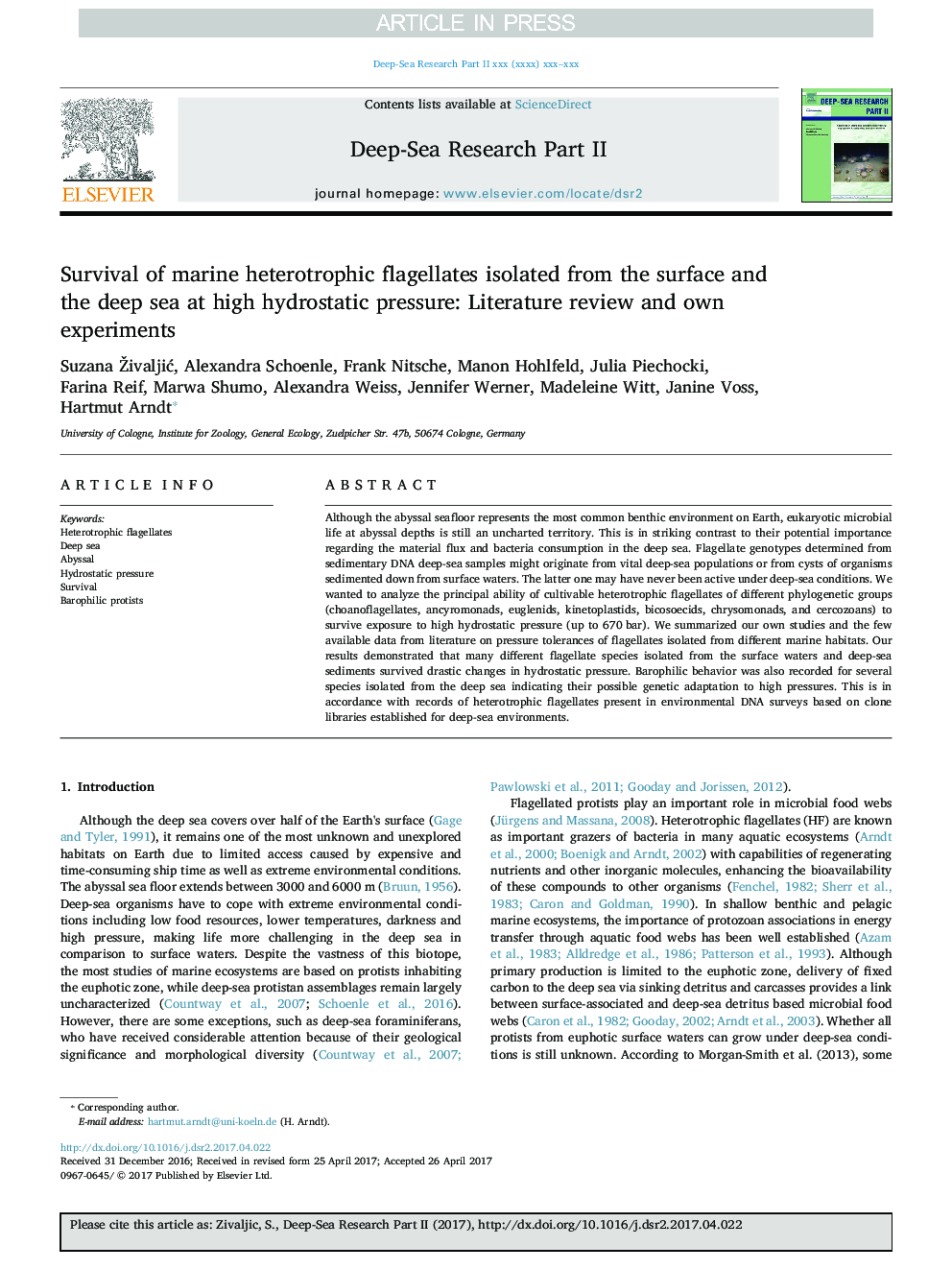| Article ID | Journal | Published Year | Pages | File Type |
|---|---|---|---|---|
| 8884474 | Deep Sea Research Part II: Topical Studies in Oceanography | 2018 | 9 Pages |
Abstract
Although the abyssal seafloor represents the most common benthic environment on Earth, eukaryotic microbial life at abyssal depths is still an uncharted territory. This is in striking contrast to their potential importance regarding the material flux and bacteria consumption in the deep sea. Flagellate genotypes determined from sedimentary DNA deepâsea samples might originate from vital deepâsea populations or from cysts of organisms sedimented down from surface waters. The latter one may have never been active under deepâsea conditions. We wanted to analyze the principal ability of cultivable heterotrophic flagellates of different phylogenetic groups (choanoflagellates, ancyromonads, euglenids, kinetoplastids, bicosoecids, chrysomonads, and cercozoans) to survive exposure to high hydrostatic pressure (up to 670Â bar). We summarized our own studies and the few available data from literature on pressure tolerances of flagellates isolated from different marine habitats. Our results demonstrated that many different flagellate species isolated from the surface waters and deep-sea sediments survived drastic changes in hydrostatic pressure. Barophilic behavior was also recorded for several species isolated from the deep sea indicating their possible genetic adaptation to high pressures. This is in accordance with records of heterotrophic flagellates present in environmental DNA surveys based on clone libraries established for deepâsea environments.
Related Topics
Physical Sciences and Engineering
Earth and Planetary Sciences
Geology
Authors
Suzana ŽivaljiÄ, Alexandra Schoenle, Frank Nitsche, Manon Hohlfeld, Julia Piechocki, Farina Reif, Marwa Shumo, Alexandra Weiss, Jennifer Werner, Madeleine Witt, Janine Voss, Hartmut Arndt,
